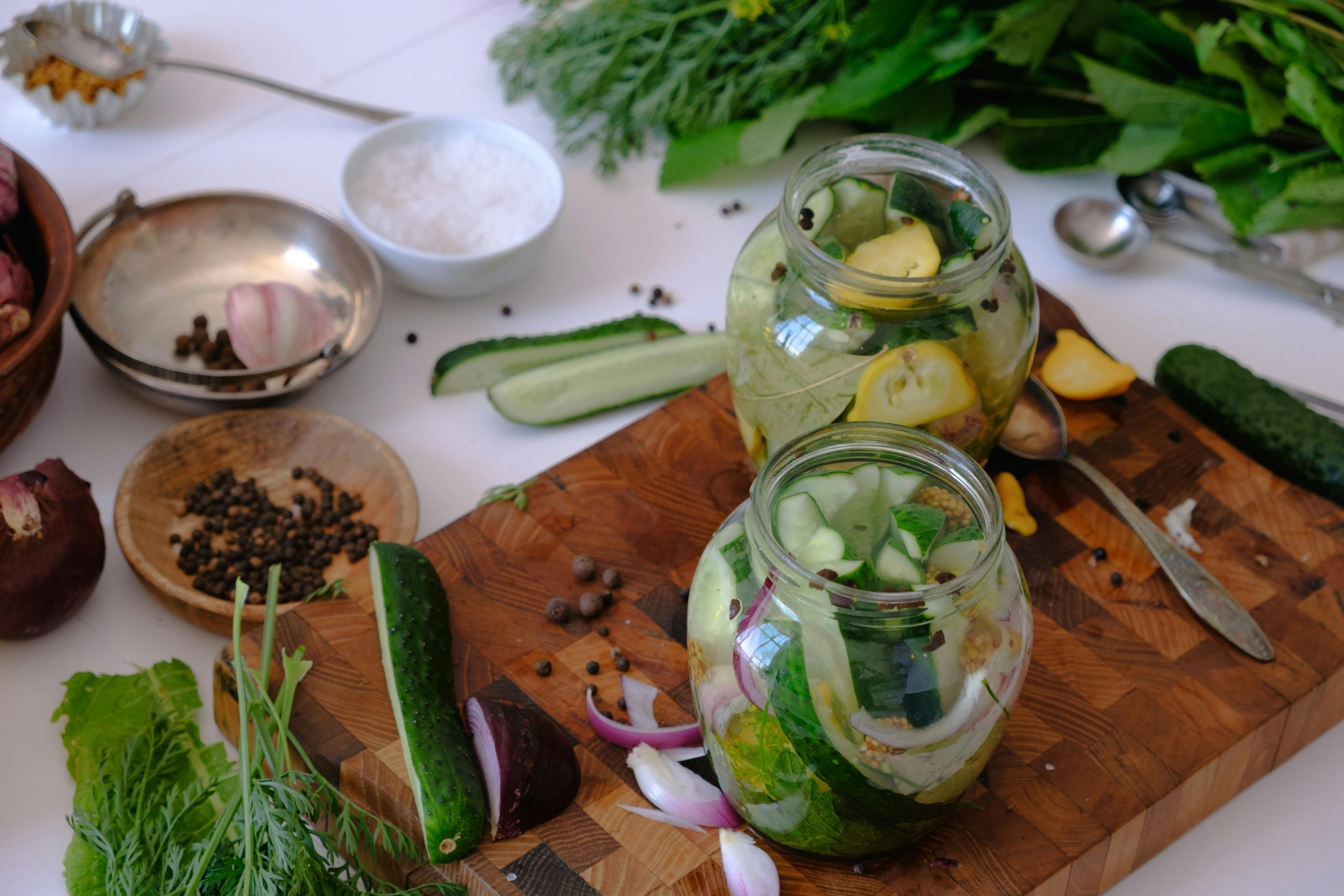Fermentation at Home: Sauerkraut to Kombucha Basics
Fermentation is an age-old practice of preserving food that has recently gained popularity in modern times. The process of fermentation involves using microorganisms to break down sugars and create beneficial by-products. This not only preserves the food but also enhances its flavor, texture, and nutritional value. With a growing trend towards healthier and more natural food options, fermentation has become a popular method for home cooks to create their own delicious and nutritious foods. In this article, we will explore two basic fermented foods that you can easily make at home – Sauerkraut and Kombucha.
Sauerkraut Basics
What is Sauerkraut?
Sauerkraut is a traditional fermented cabbage dish that originated in Germany. It is made by combining shredded cabbage, salt, and other seasonings in an airtight container and allowing it to ferment for a few weeks. The fermentation process naturally produces lactic acid, which gives sauerkraut its signature tangy flavor and preserves the cabbage for an extended period.
Health Benefits of Sauerkraut
In addition to being a tasty side dish, sauerkraut also offers a variety of health benefits. The fermentation process increases the bioavailability of nutrients present in cabbage, making them easier to digest and absorb. It is also a great source of probiotics, which are beneficial bacteria that help maintain a healthy gut microbiome. Sauerkraut is also low in calories and high in vitamin C and fiber, making it a nutritious addition to any meal.
How to Make Sauerkraut at Home
To make sauerkraut at home, you will need a head of cabbage, sea salt, and any desired seasonings or spices. Start by shredding the cabbage finely and removing the tough outer leaves. In a large bowl, mix the cabbage with a generous amount of sea salt and use your hands to massage the salt into the cabbage. This helps release excess water and creates a brine that will aid in the fermentation process.
Next, transfer the cabbage and brine into an airtight container. You can use a glass jar or a ceramic crock, as long as it has a wide opening and can be sealed tightly. Use a clean plate or a weight to keep the cabbage submerged in the brine, as exposure to air can lead to mold growth. Finally, cover the container and let it sit at room temperature for 1-2 weeks, depending on the desired level of fermentation. Make sure to taste the sauerkraut regularly to monitor its progress.
Kombucha Basics
What is Kombucha?
Kombucha is a fermented tea drink that originated in China over 2000 years ago. It is made by fermenting sweetened tea with a culture of bacteria and yeast called a SCOBY (symbiotic culture of bacteria and yeast). The SCOBY feeds on the sugar and produces beneficial compounds like organic acids, enzymes, and probiotics, giving Kombucha its characteristic tangy and slightly effervescent taste.
Health Benefits of Kombucha
Kombucha is known for its numerous health benefits, making it a popular drink among the health-conscious. It is rich in probiotics, B vitamins, and antioxidants, all of which have been linked to improved digestion, immune function, and overall well-being. Some studies also suggest that Kombucha can aid in weight loss, reduce inflammation, and even have anti-cancer properties.
How to Brew Kombucha at Home
Making Kombucha at home requires some initial setup and may seem daunting at first. However, once you get the hang of it, it is a relatively simple process. You will need a SCOBY, black tea, sugar, and a large glass jar or container. First, brew a batch of black tea, add sugar, and let it cool to room temperature. Transfer the cooled tea into the glass jar and add the SCOBY, making sure it is submerged in the tea. Cover the jar with a clean cloth or paper towel and secure it with a rubber band.
Let the jar sit at room temperature for 7-14 days, depending on the desired level of fermentation. You can also add fruit or herbs to flavor your Kombucha during this time. Make sure to taste the drink regularly until it reaches your desired level of sweetness and fizzy acidity. Finally, bottle the Kombucha, leaving some space for it to ferment further, and let it sit at room temperature for another 1-3 days. This will help enhance the flavor and carbonation of the drink. Refrigerate your Kombucha, and it will be ready to enjoy within the next few days.
Fermenting at home may seem intimidating at first, but once you understand the basics, it is a simple and rewarding process. Sauerkraut and Kombucha are just two examples of the endless possibilities of fermented foods that you can create in your own kitchen. With their many health benefits and delicious flavors, these foods are a great addition to any meal and a must-try for any home cook. So grab your ingredients and start fermenting to experience the magic of these mouth-watering and nutritious foods.










